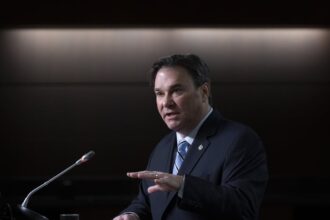In a political landscape increasingly defined by fiscal restraint debates, Canada’s NDP government has mounted a vigorous defense of its expansion of the federal public service, even as opposition parties intensify their criticism of what they call “bloated bureaucracy.”
Finance Minister Chrystia Freeland presented data yesterday indicating that the 23% increase in public sector positions since 2015 has directly corresponded with improved service delivery across critical government functions. “These are not just numbers on a spreadsheet,” Freeland told reporters at a press conference in Ottawa. “Each addition represents enhanced capacity to serve Canadians—from processing immigration applications more efficiently to improving veterans’ services.”
The expansion has added approximately 73,000 positions to the federal workforce, bringing the total to just over 319,000 employees. Government officials point to pandemic-related service demands and implementation of new social programs as primary drivers behind the growth.
Conservative finance critic Pierre Poilievre has emerged as the most vocal opponent of the expansion. “While small businesses struggled through lockdowns and inflation, this government added bureaucrats at an unprecedented rate,” Poilievre said during a heated question period exchange. “Canadians are paying more and waiting longer for basic services despite this massive growth.”
Independent analysis from the Parliamentary Budget Office presents a more nuanced picture. Their March 2023 report notes that while overall numbers have increased significantly, departmental efficiency metrics have improved in several key areas, including passport processing times and tax return completions.
Labour economists point out that the debate requires context. “Public sector growth must be evaluated against population increases and expanded service mandates,” explained Dr. Heather McKenzie of the University of Toronto’s School of Public Policy. “Canada’s population has grown by nearly 10% in this period, creating legitimate demand for additional capacity.”
The controversy emerges amid broader concerns about government spending. With inflation only recently moderating and interest rates remaining elevated, fiscal hawks argue that public sector wage bills represent an unsustainable burden on taxpayers. The government counters that investments in human capital have strengthened Canada’s institutional resilience.
Perhaps most telling is regional reaction to the expansion. Polling data from Abacus Research suggests voters in urban centers are more supportive of public service growth, while rural Canadians express greater skepticism about its value relative to cost.
“We won’t apologize for building capacity to deliver the services Canadians depend on,” Prime Minister Jagmeet Singh stated during a visit to a Service Canada center in Winnipeg. “The alternative—understaffed agencies unable to meet public needs—is something previous governments tried, and Canadians rejected that approach.”
As budget deliberations approach this spring, the fundamental question remains unresolved: at what point does administrative expansion shift from necessary capacity-building to inefficient bureaucratic growth? The answer may ultimately depend less on raw numbers and more on whether Canadians perceive tangible improvements in their interactions with government services.


















